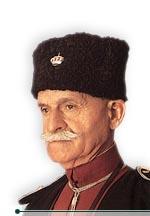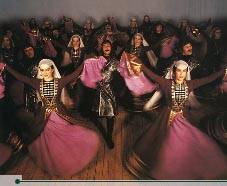THE PEOPLE OF JORDAN

© Zohrab
The Bedouins
One of the best known groups from Jordan’s population is the Bedouin. As they are known in Arabic, the Bedu, or “desert dwellers,” endure the desert and have learned to survive its unforgiving climate. It is difficult to count Bedouins, but it is generally known that the majority of Jordan’s population is of Bedouin origin.
Most of Jordan’s Bedouin live in the vast wasteland that extends east from the Desert Highway. All throughout the south and east of the country, their communities are marked by characteristic black goat-hair tents. These are known as beit al-sha’ar, or “house of hair.”
|
Bedouins are often stereotyped as constantly wandering the desert in search of water and food for their flocks. This is only partly true. Only a small portion of Bedouin can still be regarded as true nomads, while many have settled down to cultivate crops rather than drive their animals across the desert. Most Bedouin have combined the two lifestyles to some degree. Those Bedouins who still practice pastoralism will camp in one spot for a few months at a time, grazing their herds of goats, sheep or camels until the fodder found in the area is exhausted. It is then time to move on. Often the only concession they make to the modern world is the acquisition of a pick-up truck (to move their animals long distances), plastic water containers and perhaps a kerosene stove. It can be said that many of the characteristics of the Jordanian and Arab society are found in their strongest form in Bedouin culture. For instance, Bedouins are most famous for their hospitality, and it is part of their creed—rooted in the harshness of desert life—that no traveller is turned away. The tribal structure of Arab society is also most visible among the Bedouins, where the clan is at the center of social life. Each Bedouin family has its own tent, a collection (hayy) of which constitutes a clan (qawm). A number of these clans make up a tribe, or qabila. As the Bedouins have long been, and still remain to a limited degree, outside the governing authority of the state, they have used a number of social mechanisms—including exile from the tribe, and the exaction of “blood money” or vengeance to right a crime—to maintain order in the society. The values of Bedouin society are vested in an ancient code of honor, calling for total loyalty to the clan and tribe in order to uphold the survival of the group. The Jordanian government, which in the past promoted the settling of the Bedouin, recognizes the unique value of their contribution to Jordan’s culture and heritage. Indeed, it has been said that they are the backbone of the Kingdom. The government continues to provide services such as education, housing and health clinics. However, some Bedouins pass these up in favor of the lifestyle which has served them so well over the centuries. |
|
Some Jordanians are of Palestinian origin, having been forced from their homeland during the 1948 and 1967 wars with Israel. Jordan was the only Arab state to grant all Palestinians the right to Jordanian citizenship and many have exercised that option, playing an important part in the political and economic life of Jordan. Some Palestinians continue to live in a number of refugee camps scattered throughout the West Bank and the northern part of Jordan, where the United Nations Relief Works Agency (UNRWA) is responsible for the welfare of the refugees, including their health and education. There are currently close to 1.4 million Palestinian refugees registered in Jordan. Although massive influxes of refugees have strained Jordan’s economy, Palestinian Jordanians have contributed greatly to the health and prosperity of the country. |

|
The Circassians are a non-Arab Islamic people originally from the Caucasus region of western Asia. Southward Russian expansion during the 19th century forced between 1.25 and two million Circassians to emigrate south. Many of these perished along the way, but around one million reached the Ottoman Empire, where they settled first in the Balkans and later in the Levant region of the Middle East. |
|
The Ottomans managed the resettlement of the Circassians to some extent, recruiting them into the police and governmental structures. Until the 1940s, they continued to overwhelmingly prefer service in the army or government, but now they are represented in a diverse assortment of sectors and professions. Today, Circassian Jordanians are a well-educated people who continue to play a role in Jordan’s political, economic and social life, larger than their numbers would indicate. Circassian culture places strong emphasis on respect for the elderly and closely-knit extended families. Marriage with anyone sharing the same surname of either parent is strictly forbidden. Circassians are also well known for their honesty. In fact, Jordanian Circassians constitute King Hussein’s ceremonial guard. |
|
|
In addition to the Christian denominations described previously, there are other small communities of religious minorities scattered throughout Jordan. A small community of Druze live in Jordan, mainly near the Syrian border. There is also a community of Druze in Azraq, in the east of the country. Several other minorities complete Jordan’s social mosaic. Several thousand Armenians live in Amman and in other parts of the country. The north Jordan Valley hosts a small community of Turkomans and Baha’is, who moved from Iran to Jordan to escape persecution in 1910. |
| In the late nineteenth century, Chechens, another Caucasian people, migrated to Jordan from Grozny in waves. Over the years, they have assimilated into Jordanian society, while maintaining their special culture and charm. For example, it is a marriage tradition among the Chechens, for the groom to capture his future bride with her consent and against the will of her family. This was seen as a measure of manhood, horsemanship and bravery. Today, this practice continues, but has taken on more of a ceremonial nature. |

